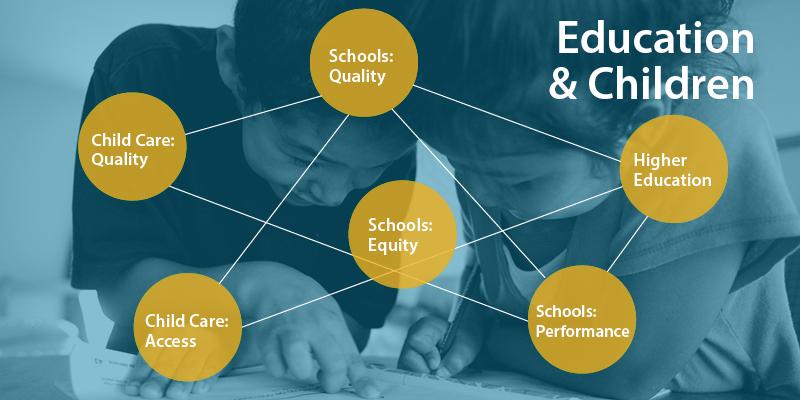Education & Children

Education is a key driver of sustainability, both for individuals and for regions. Individuals benefit from education in a variety of ways, including higher productivity, higher wages, better health outcomes, and less need for publicly funded economic assistance. A robust system of indicators for education and children is expected to provide accurate and precise information to illuminate the condition of education and contribute to its improvement. Some key indicators considered in this section include: access and quality of childcare; and equity, performance, and quality of schools (for both high school and higher education).
Key Indicators
Childcare Facilities
The Austin area has more than 1700 public and private child care facilities, but only about half of all child care facilities are licensed and only 105 or 6% of all child care facilities are accredited.
Graduation Rates
On average, there is about a 10% gap between the graduation and persistence rates for the ethnicity with the highest graduation rate (Asian) and the ethnicity with the lowest graduation rate (Black).
Trust in Public Education
In 2018, 30% of Austin Area residents strongly agreed that the public school system could better support students to ensure they perform well and graduate.
Bilingual Students
The number of bilingual students has been increasing in the Austin area while the number of bilingual teachers in Austin area campuses has remained flat. In 2015, the ratio of bilingual students to teachers is 30:1. Of the 40% of bilingual students who did not graduate from high school in 2014, 20% dropped out of school. This, however, is an improvement from the 37% dropout rate for bilingual students in 2003.

